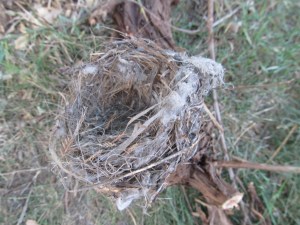I asked the tree trimmers who had worked for us before to come do an estimate of pruning the big old tree in back, the big old (slightly younger) tree in front, and ripping out the juniper bushes entirely. As I remember, when they came out last time, they pruned both ashes and the old apple, and removed an upright juniper, and the whole thing cost about $55o.
Umm… this estimate is higher. By a lot
$1600 for the ash in back, $600 for the ash in front. $450 to take out the junipers.
Seriously. $450 for the junipers?
I plan to get another estimate for the big trees, because this seems high. They did come highly recommended, and I was happy with the work they did before, and I am not going to climb up in my 50 year old ash tree and chop things up. But still. Cadillac prices.
I came to a conclusion in the shower, where I do my best thinking, and decided that for 450 I can rip out my own junipers.
Day 1 I started Saturday, tentatively at first, sitting in front with loppers, looking for the trunk, hoping I could just get in there and saw it down. Then I stood up and went around behind the northern-most bush, and saw that where the kids had tried to chop out a playhouse, it was pretty easy to access bigger branches. Lop lop lop, throw into a pile. After a while, I broke out the pruning saw, to get the branches that were too big to get with the lopper.
I discovered 3 wasp nests, unoccupied, and a bird nest, also unoccupied.

Little bird nest.
On the first afternoon, I got most of two shrubs cut up, waiting for the main trunk to be cut as close to the ground as possible. The temperature was about 75 degrees, not too bad for working outside, but my arms got scratched up, and I got dust and stuff in my eyes, even with safety glasses, and there were little pieces of prickly stuff everywhere. I kept thinking, “$450… $450”
DH suggested buying a chain saw when I was halfway into it. I may have growled at him.
.
Day 2 had record breaking temperatures. High temperatures, in case you are wondering. I loaded the pick-up, then discovered the waste yard was closed on Mondays. D’oh. Then I crawled into the house, and waited for it to cool off, investing the time in looking at wholesale bulb catalogs and drawing plans for the new bed. I also took a nap.
Day 3, the weather was cooler, but not by much. I drove the pick-up to the city waste yard, dumped the trimmings, then reloaded twice. The third time I stopped for iced coffee and a brownie, then stocked up on epsom salts.
Day 4: We sawed up the last of the shrubs, loaded up the truck, this time with help from DH, who didn’t have to go into work until late.
We also rented a small electric chainsaw. The stumps are just too big for the pruning saw. It cost about $40, and made the stumps go much more quickly.

Thank you Kate, for taking pictures…maybe we’ll have a conversation sometime about flattering angles.
I’m glad we rented, because safety equipment came with it. If we had bought a saw, I know we would have half-assed the safety part. Sure, I would have worn safety goggles, but the kit from the rental place had chaps, and goggles, and a hard hat with hearing protection.

I’m coming after you, stumpy!
At the end of day 4, the only thing left is clean up- the remaining stumps and branches, and sweeping. The next time I get mulch, a thick layer will go onto this area, and when the weather cools in fall, I’ll transplant things into it.
My thought throughout this project was “We’re saving $450” every time I cussed, and complained, and found little tiny prickly juniper needles in my bra (in my bra!) I would think about the money I was saving. What is a project you could have hired out, but didn’t, or you did it yourself, but would never do it again? What would you do with $450?
*my original working title for this post was a different F word, which expressed how I was feeling toward the bushes. The boy saw it when I was working on it, and attempted to cover my eyes, to protect me. He thought someone bad on the internet had written that word, and he wanted to protect me, bless his heart.





















